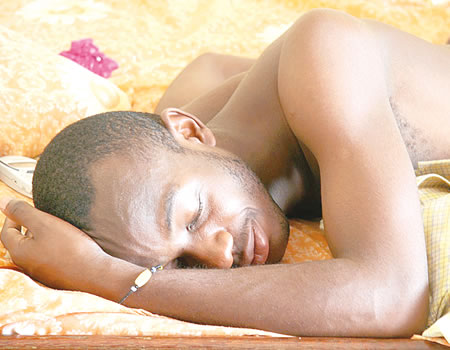More than 936 million people have obstructive sleep apnea – the disease’s first prevalence update in more than a decade – according to The Lancet Respiratory Medicine, the world’s leading journal in its field.
The Lancet published a multinational analysis by ResMed and 12 academic leaders in sleep research. The results were first presented at the ATS 2018 International Conference in San Diego.
This figure is nearly 10 times greater than the World Health Organisation’s 2007 estimate of more than 100 million, renewing calls for physicians to step up their efforts to screen, diagnose, and prescribe treatment for those who unknowingly suffer.
We’re using technology to tackle insecurity, Buhari tells South West…
The journal states: “More than 85 per cent of sleep apnea patients are undiagnosed, meaning hundreds of millions repeatedly suffocate instead of getting healthy, restful sleep each night. This raises their risk of workplace and roadway accidents, and can contribute to other significant health problems, such as hypertension, cardiovascular disease, or even poor glucose control for diabetic patients. We know the risks, and now we know the size of the problem is nearly 10 times greater than previously thought. Addressing it starts with screening patients we know to be high-risk.
“Sufferers often don’t know they’re suffering. They’ll stop breathing for 10 seconds or more throughout the night – called an “apnea” – and repeatedly wake to breathe and prevent suffocation. They rarely remember waking, but the disruptive cycle causes chronic sleep deprivation.
“Many will attribute the resulting tiredness to aging or stress,” said Nunez. “Others will mention the problem to their doctor, only to be misdiagnosed with insomnia, migraines, chronic fatigue, or other conditions. Misdiagnosis is especially common with women, since sleep apnea was long thought to be much more common in men.
Another reason many suffer unknowingly can be blamed on cultural ideas of what constitutes good sleep.
“For instance, some believe snoring may simply be a normal feature of how some people sleep, when in fact it’s one of the most important signs for the risk of having sleep apnea,” Nunez said.
“With a global prevalence that approaches 1 billion people, patients and physicians need to consider the risks and ask the questions that may ultimately help them sleep and live better. This is no longer a problem that can be treated lightly or ignored.”
More than half of all people with obesity, heart failure, stroke or transient ischemic attack (TIA), atrial fibrillation, or type 2 diabetes also have sleep apnea, according to leading research.
Snoring is the number-one indicator of sleep apnea in men and women, though not everyone who snores has it – and not everyone who has it snores.
People told they stop breathing for long periods during sleep are also at a higher risk for the disorder.






